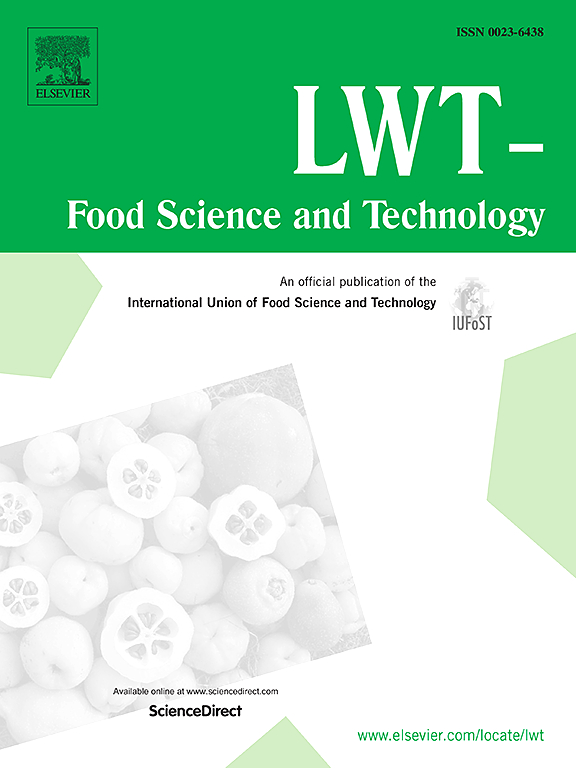Metabolomic and transcriptomic analyses reveal the regulation mechanism of postharvest light-induced phenolics accumulation in mango peel
IF 6.6
1区 农林科学
Q1 FOOD SCIENCE & TECHNOLOGY
引用次数: 0
Abstract
Phenolics are important secondary metabolites and antioxidants in plants. Mango fruit accumulate abundant phenolic compounds, while the effect of light on the accumulation of different phenolic components in mango peel and the relevant molecular mechanism are still unknown. In this study, mature ‘Guifei’ mango fruit was subjected to postharvest UV-B/white light treatment, fruit peel was sampled for metabolomic and transcriptomic analyses. The results showed that light induced the accumulation of anthocyanins, flavonoids, and phenolics, thus increasing the antioxidant capacity in mango peel. A total of 1223 phenolic metabolites were detected in mango peel, 36 phenolic compounds were defined as key differentially accumulated metabolites (DAMs) regulated by light. Among the DAMs, the accumulation of 33 compounds was promoted by light, and 30 of these were flavonoids. Light up-regulated most phenolics biosynthesis and light signaling pathway genes and also regulated expression of plant hormone signaling pathway genes. Transcription factors (TFs) such as MYB, C2H2 and HSF were identified as candidates regulating phenolics biosynthesis in mango. Our findings not only provide information for commercial application of light in promoting mango fruit appearance and increasing phenolics content and antioxidant capacity, but also reveal important aspects of the molecular regulation of light-induced phenolics accumulation in mango peel.
代谢组和转录组分析揭示芒果果皮采后光诱导酚类物质积累的调控机制
酚类化合物是植物中重要的次级代谢产物和抗氧化剂。芒果果实中积累了丰富的酚类化合物,而光照对芒果果皮中不同酚类成分积累的影响及相关分子机制尚不清楚。本研究对成熟的 "贵妃 "芒果果实进行采后紫外线-B/白光处理,并对果皮取样进行代谢组学和转录组学分析。结果表明,光照能诱导花青素、类黄酮和酚类物质的积累,从而提高芒果果皮的抗氧化能力。在芒果皮中总共检测到了1223种酚类代谢物,其中36种酚类化合物被定义为受光照调控的关键差异积累代谢物(DAMs)。在这些 DAMs 中,33 种化合物的积累受光照促进,其中 30 种是黄酮类化合物。光能上调大多数酚类化合物的生物合成和光信号途径基因,还能调节植物激素信号途径基因的表达。研究发现,MYB、C2H2 和 HSF 等转录因子是调控芒果酚类物质生物合成的候选因子。我们的研究结果不仅为光照在促进芒果果实外观、提高酚类物质含量和抗氧化能力方面的商业应用提供了信息,而且揭示了光照诱导芒果果皮酚类物质积累的分子调控的重要方面。
本文章由计算机程序翻译,如有差异,请以英文原文为准。
求助全文
约1分钟内获得全文
求助全文
来源期刊

LWT - Food Science and Technology
工程技术-食品科技
CiteScore
11.80
自引率
6.70%
发文量
1724
审稿时长
65 days
期刊介绍:
LWT - Food Science and Technology is an international journal that publishes innovative papers in the fields of food chemistry, biochemistry, microbiology, technology and nutrition. The work described should be innovative either in the approach or in the methods used. The significance of the results either for the science community or for the food industry must also be specified. Contributions written in English are welcomed in the form of review articles, short reviews, research papers, and research notes. Papers featuring animal trials and cell cultures are outside the scope of the journal and will not be considered for publication.
 求助内容:
求助内容: 应助结果提醒方式:
应助结果提醒方式:


